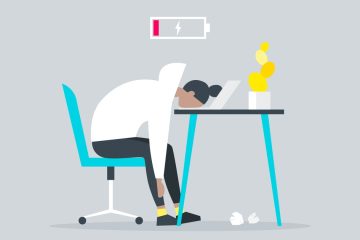Procrastination is a common challenge for individuals with ADHD. It can be frustrating and affect various aspects of your life, from work and school to personal relationships. Understanding why procrastination happens in ADHD is the first step toward managing it.
Why procrastination occurs in ADHD
- Executive functioning: ADHD often involves difficulties with executive functions, such as planning, prioritising, and organising tasks. This can make it challenging to start and complete tasks on time.
- Time perception: People with ADHD may struggle with accurately estimating how much time tasks will take, leading to poor time management and procrastination.
- Impulsivity: Impulsivity can lead to engaging in immediate, pleasurable activities instead of focusing on tasks that require long-term effort.
- Distractibility: Distractions easily capture the attention of individuals with ADHD, diverting them from tasks they should be working on.
- Perfectionism: Some individuals with ADHD procrastinate due to a fear of not meeting their own or others’ high expectations. This can lead to avoidance of tasks to avoid potential failure.
Tips and Tools to Manage Procrastination
1. Externalise Planning:
Imagine some people’s brains are like a high-quality GPS – you ask it how to get somewhere and it automatically provides the route, the time it’ll take, traffic updates on the way, etc. The ADHD brain is manually working this information out bit by bit and by the time one bit is thought through, the last bit has been forgotten…it takes a lot of energy and capacity that we don’t always have. Externalise it onto old-fashioned pen and paper – or better still on to sticky notes so that each thought can then be manually ordered once all the pieces are present. It will save your brain a lot of energy because it’s strengths lie in visual processing.
2. Chunking – Break Tasks into Smaller Steps:
Divide larger tasks into smaller, more manageable steps. This makes the task feel less overwhelming and easier to start. Even 1 minute chucks often help the initiation moment and provide a gateway to a 10 or 20 minute chunk.
3. Prioritise Tasks:
Use a to-do list or task management app to prioritise tasks based on importance and deadlines. Focus on completing high-priority tasks first. The Eisenhower Matrix is good for this. Or an app like Todoist. Or carrying a small notebook around if you prefer pen and paper.
4. Set Realistic Goals:
Be mindful of setting achievable goals. Avoid overloading your schedule, which can increase the likelihood of procrastination. Try to do one thing at a time – however small a step – and feel the accomplishment of finishing it before moving on to the next thing.
5. Use Timers, Alarms and Routines/Time Blocking:
Set timers to work on tasks for specific intervals, such as the Pomodoro Technique (25 minutes of work followed by a 5-minute break). This can help maintain focus and prevent burnout. Also block out time for doing tasks and don’t let yourself get pulled into other tasks in that block, just note them down to come back to.
6. Create a Dedicated Workspace:
Establish a clutter-free, organised workspace that minimises distractions. Ensure all necessary materials are readily available.
7. Manage Distractions:
Identify common distractions and develop strategies to minimise them. This may include using website blockers or noise-canceling headphones. Or if it’s a dull job like housework, add in a more fun element such as music or listening to a podcast.
8. Reward Yourself:
Implement a system of rewards for completing tasks. Small rewards can motivate you to start and finish your work. E.g. watch an episode of your favourite show when you’ve done 30mins of the task you didn’t want to do.
9. Seek Accountability and Delegate:
Share your goals with a friend, family member, or therapist/coach. Having someone to check in with can provide motivation and accountability. But also ask others to do tasks if it’s appropriate – we can often feel like we have to do everything ourselves! E.g. ask kids to set the table whilst you’re dishing up dinner or ask your partner to take bags to the charity shop when you’ve done the clearing out.
10. Body Doubling:
If it’s a task you can do with someone else, and they won’t distract you away from it, do it! Arrange to meet someone at the gym so you actually go, study alongside someone in person or on a video call, and invite someone round for a cuppa to make sure you tidy up. If you’re a parent, sit alongside whilst your young ADHDer does their homework – if we need these supports as adults, it doesn’t matter how old your child is, they may benefit too. It’s not about doing any of it for them, but the presence of someone else may enable them to do it themselves.
11. Practice Mindfulness:
Mindfulness techniques can help improve awareness and reduce impulsivity. Mindful breathing exercises that build interoception and integrate vagus nerve exercises can be particularly helpful. The Insight Timer app has a lot of good guided meditations for free.
12. Learn from Mistakes:
Instead of fearing failure, view it as an opportunity to learn and grow. Embrace imperfection as a part of the learning process.
Remember that managing procrastination in ADHD is an ongoing process, and it’s okay to seek support. Be patient with yourself and celebrate your successes, no matter how small they may seem. With time and practice, you can develop effective strategies to overcome procrastination and achieve your goals.


